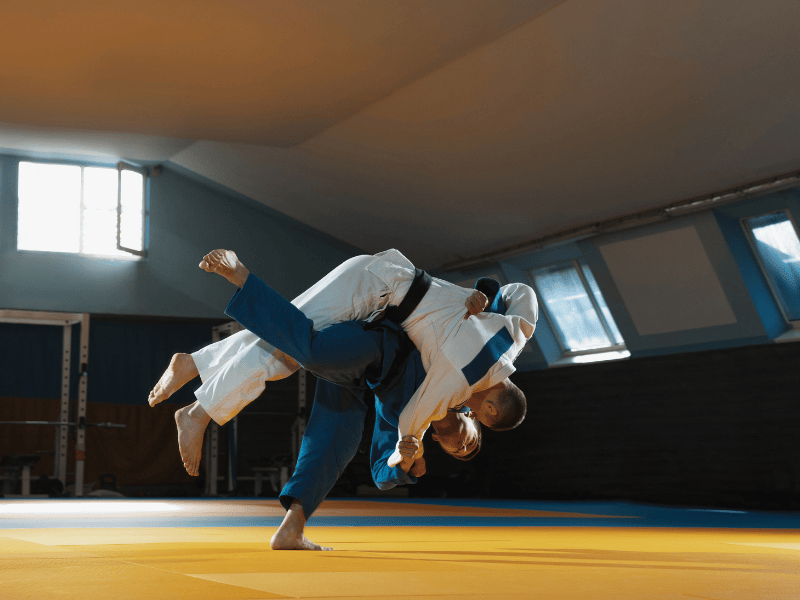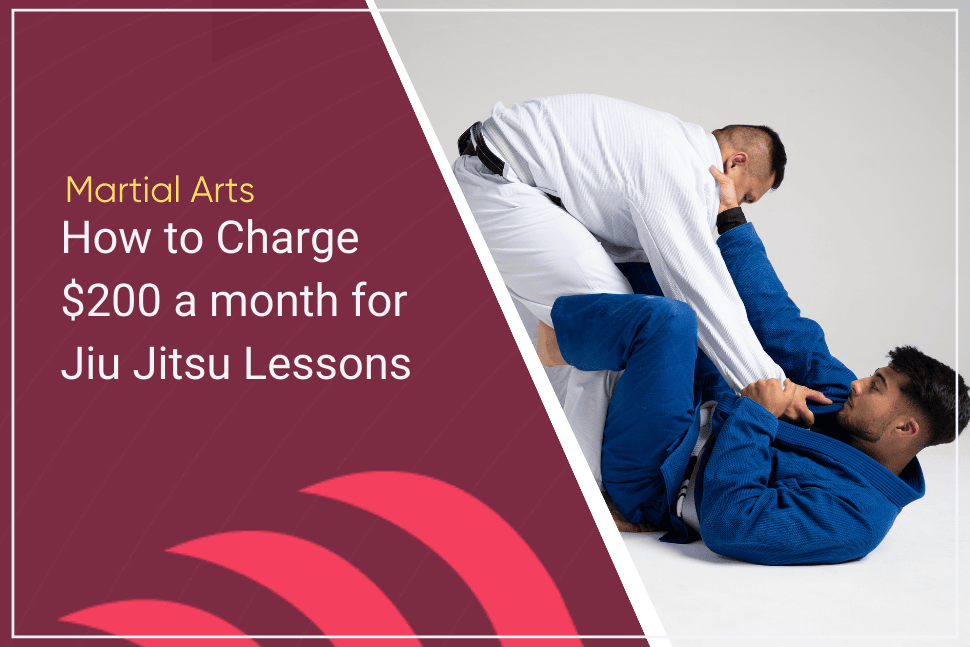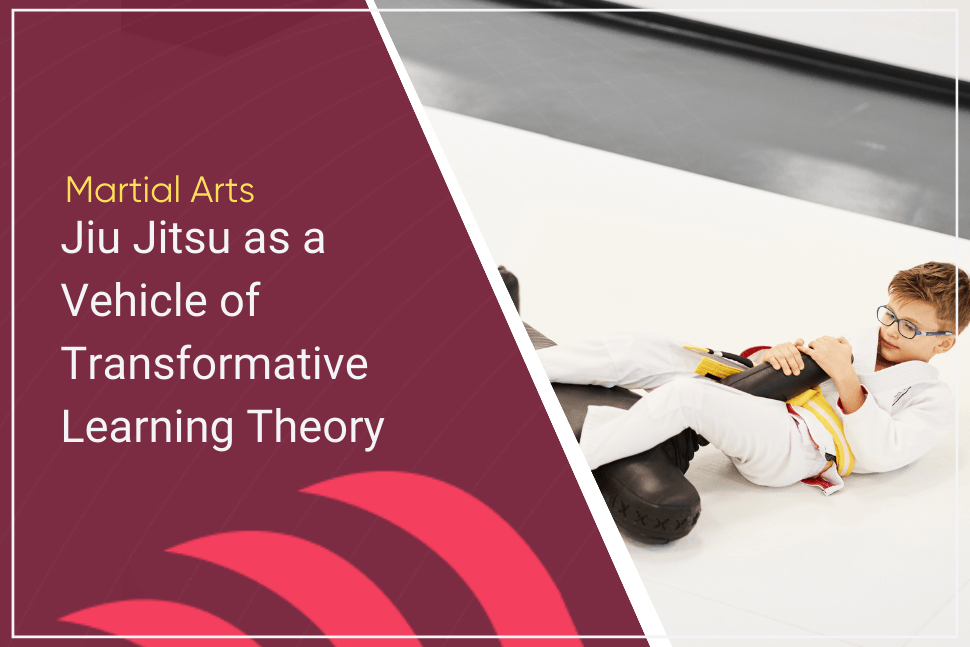How to Teach Judo to Beginners

A New Pedagogy that Makes the First Days of Judo FUN
Traditionally, the sport of judo is taught using decontextualized, decomposed & decoupled technical rehearsal drills. Rather than an athlete becoming more skilful and better able to actively problem solve, we are reduced to the role of move collectors:
“Here is the throw for today. Go and do 10 static uchi-komi followed by a full throw on the last repetition. After that, we’ll move onto moving uchi-komi up and down the mats ending on one full throw at each end of the mat. To finish we’ll do 20 nage-komi, all whilst your partner stands passively accepting the technique, and maybe, if we’ve not run out of time, we’ll do unstructured randori before you go home.”
The overwhelming majority of the coaching literature produced in the last 70 plus years paints an extremely poor picture of this type of practice. There are very few sports that are still practiced the way they were in the 1880’s, but Judo, at times, wears this appeal to tradition as a badge of honor.
This article is both a treatise offering a potential alternative to this turgid and dated approach, supported by a robust framework of modern coaching theory, and a call to action: after all, “Tradition is just peer-pressure from dead people”. We are allowed to walk a different path to the one well-trodden. We might just get there more quickly and have better views along the way.
To help you better understand this new pedagogy, I’m going to do something a little different with this article. Instead of running you through a linear argument, I’m going to help you understand by answering a series of important questions to make understanding judo for beginners a bit easier.
So let’s dive in!
Why is this traditional approach no longer fit for purpose?
The assumption that judo should be taught through the traditional pedagogy is deep rooted within the sport. These preconceptions are present both within the small, local club setting as well as within the opinions and practices championed and utilized by international and Olympic coaches. A 2015 study detailing the opinions of 44 coaches to elite players (57% coached Olympic/national teams, 70% held over 30 years of coaching experience) found that “A vast majority” of coaches believed that children should be exclusively coached through traditional methods. This is in opposition to the research literature coming from contemporary coaching science.
Rehearsing the same technique, in the same way for repetitions, where variability is sought to be eliminated, would be referred to as block practice. Block practice has been found to be inefficient regarding the transfer and retention of skills. Whilst the judoka might look as though they are improving across the course of a session, their ability to apply the practiced technique in context and retain the apparent technical improvement into the next session is marginal, at best. This was established over 40 years ago yet has failed to permeate the practice structure of most judo coaches.
Practice tasks which decompose a technique into its constituent parts (a part-whole approach) have also been found to be an ineffective modality. The kinematics utilized to perform a part of a skill are dissimilar to how the skill is performed in its totality. When we practice breaking balance and turning in for a throw against a passive opponent, we are rehearsing a reductive facsimile of how we think we perform the skill in context. It doesn’t take much exposure to the sport before a judoka can recognize that there are people with incredibly aesthetically pleasing uchi-komi who would struggle to fight their way out of a paper bag when they compete.
By practicing techniques in isolation against a passive opponent who accepts our attacks, we are failing to prepare skillful athletes. We do not simply learn a motor pattern and then deploy it in context. Skill is not the application of perfect technical models but is the development of an athlete’s ability to solve the problems being posed to them by their opponents.

So the traditional Judo pedagogy is problematic. Is there another way?
Rather than this focus on isolated technical rehearsal and the pursuit of a nebulous perfect technique, the modern coaching literature suggests we should instead embrace variability and a concept referred to as “repetition without repetition”. This means that rather than attempting to execute a perfect version of a throw against a passive opponent repeatedly, we should seek to replicate the behavior and context that a skill performed in. This concept is referred to as “representative learning design”.
When we take a ‘slice’ of the competition environment and shape a practice task to more closely align with the reality of how skills are performed in context, we are far more likely to see a higher degree of transfer and retention between the practice hall and the contest arena.
As an example, a traditional approach to coaching a tai otoshi may look something akin to this: A coach starts by demonstrating an idealized version of the technique on a static, passive partner in front of a class. They may vocalize some key technical points they think are important for successfully executing the technique. They may then prescribe a set amount of uchi-komi or nage-komi, maybe thinking they’d be building “muscle memory” or in the mistaken assumption that by rehearsing this idealized movement pattern they’d be ingraining the movement such that any variability or errors would be eliminated, or at least minimized.
The players would start off looking disjointed and lacking coordination, but as they performed more and more tai otoshis against a passive opponent they’d start to look far more competent. The major issue with this, as previously discussed, is that this superficial improvement, when tested, rarely transfers to the contest environment, and the retention of this motor pattern is minimal.
There is another way. We can use a strategy where we, as coaches, shape practice tasks to spotlight specific skills or points of focus (referred to as “constraining” and the approach is the “constraints led approach”). The rationale which underpins this approach is that information we perceive from the environment we perform our sports in (in the above case, the behaviour of our opponents) is crucial as it is utilized to coordinate our movements. This process is referred to as “perception-action coupling”.
If my opponent stands passively whilst I throw them, I am learning how to throw a static, passive opponent. If my opponent is trying to avoid my attacks and attack me too, then I improve the skill of throwing an opponent who really would rather not be thrown. We can manipulate the task, the environment or the individual to create practice tasks which retain the information we need to learn to coordinate our actions.
When a practice task is more closely representative of the performance environment, our skills have more functionality and action fidelity, that is, the information we are learning to co-ordinate against, and the kinematics of the throws are performed in practice are more akin to how they are performed in contest which facilitates greater transfer from practice into contest.
An approach that embraces these modern coaching principles may look more like this: A coach sets a challenge.
“Can you use the back of your calf to block your opponent's far leg shin? Every time you use the back of your leg to block your opponent's far leg shin, you score one point”.
As the players are each trying to achieve the task goal, they are self-organizing an appropriate motor solution, which is contextually congruent. Their opponent is behaving in a way that more closely reflects the reality of the contest environment. As the game progresses, the coach may notice maladaptive motor solutions and further guide and shape the rules that govern the task, or set mini challenges that further scaffold the movement patterns the players are utilizing to score points within the game. For example,
- “Do you think you can score a point if you’re stood in front of your opponent?
- “Do you think you might have more success if you try and find a way to get out of your own way?”
This would encourage players to experiment with reverse steps, S steps and side steps to create a better angle of attack. As the players become more attuned to the behavior of their opponents and how they can move themselves in order to score points, the task can be progressed.
“Now we are all scoring points, we will change our task rules. Now, you will score 1 point if you can contact your opponent’s far shin with the back of your calf, but you’ll score 5 points if you can contact their shin and find a way to throw them over such that they land on their backs.”
Once the players have progressed to the point that they are achieving some success in this task, it is crucial that the skill being developed is then opened into an increasingly more representative environment.
To achieve this, the task rules can change again, such that the skill being developed isn’t being practiced in isolation. If the only way my opponent can score is by turning their back and blocking my leg, my behavior can change to prevent them achieving that goal in such a way that were I to do so in open randori, I’d be punished with other throws. In order to ensure that the player's opponent is defending in a realistic way, randori with a specific scoring system can shine a spotlight on the skill we’re looking to develop.
“Next, we are doing randori with our partners. Any throw you are successful with will score you one point, but if you can score by blocking their shin with the back of your calf, you’ll score five points. The first person to get 10 points wins.”
This rule change ensures that the players can no longer defend in a way that would be punished in open randori. If all I do is move my legs behind me and push you away from me, you can exploit my postural instability with a different skill. We are turning up the volume on the skill we are looking to explore, rather than turning off the volume on the other skills that exist. The players are encouraged to seek repetitions of the tai otoshi style throws, as the reward is great enough for them to try but are also sensitive to the other throws that can be used in combination with the skill.
Famous Judoka (X) doesn’t train like this, and he or she is very good at judo…
The claim this article is making is that there are a lot of practice tasks and drills that are utilized in judo that are extremely ineffective. It isn’t making the claim that all practice tasks used in traditional judo are ineffective. Whilst the efficacy of uchi-komi, nage-komi and kata is questionable, hours of quality randori against the best judo players on earth will still lead to extremely well attuned, skilful judo players.
If I did 10 hours a week of randori against players just in and around my current ability level, I would increase my skills considerably. If I also spent 10 hours a week on another, less effective task, be it technical rehearsal through uchikomi and nagekomi or playing Xbox games I’d still be getting better. I’m simply suggesting that time could be better spent.
I have coached this way for years. Are you suggesting I’ve been coaching badly?
This article is written in a way that is intentionally quite provocative. I’m hoping to challenge some of the assumptions you may hold and to offer a potential alternative that is underpinned by a robust theoretical literature base. Motor learning and skill acquisition is only one element of coaching and the dedication, commitment and care the overwhelming majority of judo coaches show to both the sport itself and the judoka they are entrusted to coach is beyond reproach.
Whilst I am quite firm in suggesting there is a better way to coach skill than what we commonly see in judo lessons, I am in no way suggesting that coaches who have invested years, in many cases decades, into coaching judo have been anything less than incredible in that role. As a coach of 17 years and a judoka of 28 years, I’ve benefited from and seen the benefits of coaches with a radically different approach to skill acquisition to me.
I might be onboard with this new teaching approach, but where do I start?
If you are interested in exploring and utilizing a more progressive approach to judo coaching, and you’re a committed coach who is fully invested in developing their coaching capacities and has the time to invest, I’d suggest diving into the literature. I’d recommend Rob Gray’s “How We Learn to Move” as a good introductory text, followed by the essential book, “The constraints led approach” by Ian Renshaw and colleagues.
Other than that, there are a multitude of podcasts which focus on coaching as well as several specifically on coaching in combat sports, including:
- Rob Gray’s Perception & Action Podcast
- Scott Sievewright’s Primal MMA Coaching podcast
- Josh Peacock’s Combat Learning Podcast
I don’t have the time to read all these books. Do you have any quick rules of thumb that might help?
Yes, several:
- Try and make sure practice tasks have the players trying to accomplish some form of task goal, rather than rehearsing a movement.
- Try and design practice tasks that spotlight a particular area of focus, whilst allowing other solutions to remain viable. If I only allow X, the defender will behave in a false way to only prevent X.
- Try and ensure that both players are moving and behaving in a way that they would if they were in an actual contest with each other. We don’t need to learn to beat people that let us throw them. We need to learn to throw people that would rather not be thrown.
All in all, this is going to be a lot of trial and error. Don't be afraid to make mistakes, and definitely don't be afraid
Bibliography
Davids, K., Kingsbury, D., Bennett, S., & Handford, C. (2001). Information-movement coupling: Implications for the organization of research and practice during acquisition of self-paced extrinsic timing skills. Journal of Sports Sciences,19(2), 117–127.
Krause, L.., Farrow, D., Reid, M., Buszard, T and Pinder, R (2018) Helping coaches apply the principles of representative learning design: validation of a tennis specific practice assessment tool, Journal of Sports Sciences, 36:11, 1277-128
Reid, Machar & Elliott, Bruce & Whiteside, David. (2010). Task decomposition and the high performance tennis serve. Conference: 28th Conference of the International Society of Biomechanics in SportsVolume: pp. 301-304
Santos, L., Fernandez-Rio, J., Almansba, R., Sterkowicz, S. and Callan, M., (2015) Perceptions of Top-Level Judo Coaches on Training and Performance. International Journal of Sports Science and Coaching. 10 (1)
Shea, J. B., and Morgan, R. L. (1979). Contextual interference effects on the acquisition, retention, and transfer of a motor skill. J. Exp. Psychol. Hum. Learn. Mem. 5, 179–187. doi: 10.1037/0278-7393.5.2.179
Gym management software that frees up your time and helps you grow.
Simplified billing, enrollment, student management, and marketing features that help you grow your gym or martial arts school.





